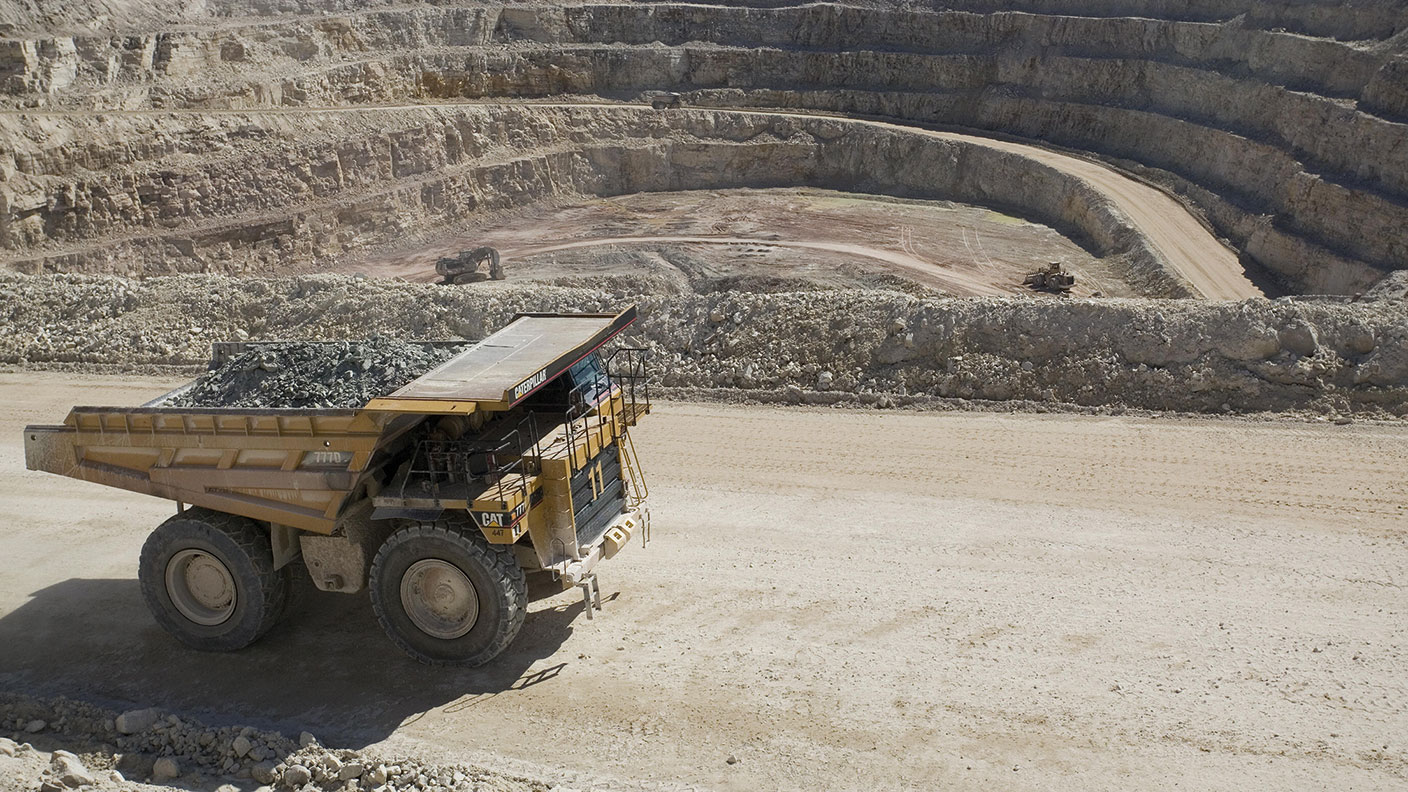How to profit as uranium prices head for a melt-up
The supply squeeze in the uranium market implies ample scope for price rises. Here's how to invest in uranium.


When was the last time you heard about nuclear power and the demand for uranium? People used to debate the matter passionately, but it hasn’t been a hot topic in the developed world for some time now. The Germans have gone off nuclear power and the UK has so far proved poor at building new reactors.
The real story, however, is outside Europe and America. China, India, Russia, Belarus, Korea, Slovakia and the United Arab Emirates are collectively adding over eight gigawatts (GW) of new capacity in 2021. (A GW is equal to one billion watts, while an incandescent lightbulb consumes around 60 to 100 watts.)
There are 53 nuclear reactors under construction worldwide and over 300 have been proposed for this decade. Many countries in the developing world think that nuclear power is one of the crucial building-blocks of a green-energy transition and are spending huge sums of money on new capacity.
MoneyWeek
Subscribe to MoneyWeek today and get your first six magazine issues absolutely FREE

Sign up to Money Morning
Don't miss the latest investment and personal finances news, market analysis, plus money-saving tips with our free twice-daily newsletter
Don't miss the latest investment and personal finances news, market analysis, plus money-saving tips with our free twice-daily newsletter
Meanwhile, even previously nuclear-phobic countries such as Germany are restarting some of their plants while the Biden administration in the US is making positive noises about – at the very least – keeping its existing fleet of reactors and maybe even building some new ones.
An illiquid market
Investing in uranium and gauging prices for uranium-based products can be tricky, however. The market is not like classic, liquid commodity markets where there are obvious supply and demand drivers and a panoply of financial-market prices and structures in tow.
Most utilities in need of uranium oxide (U3O8), the raw material used in nuclear reactors, do not tend to ring up a commodity trader and buy the product on the spot market, though that does happen. Instead, they sign long-term contracts with a few, strategically important suppliers from trusted countries, mainly Kazakhstan and Canada. They might also source supplies via the nuclear weapon-decommissioning programmes that have been operating for the last few decades. The demand from utilities for supplies is also not very price-elastic.
If utilities have enough raw material, they will stay away from the thinly-developed spot markets, which means that if one consumer – say Japan – suddenly stops buying, one can see sudden and prolonged drops in the price of U3O8. And that has certainly been true over the last decade. Even after recent increases, post-Fukushima prices are still 85% below their all-time high.
The Covid-19 supply squeeze
But the inelasticity of demand and supply can also result in sharp bounces. Utilities will have a steady need for supplies and if those long-term contracts start to finish, they might find themselves scrambling for more, especially if traditional sources of supply go offline.
And that has been the case during the pandemic. Cameco in Canada, the world’s second-largest producer, has shut every one of its uranium mines in Canada. Output at Kazatomprom, the world’s biggest producer, is at a multi-year low. The US produced a negligible amount of uranium in 2020. This sort of backdrop can trigger sudden surges: in 2007 prices increased fivefold in one year to $140 a pound (lb) as utilities panicked about scarcity of supply after a mine called Cigar Lake was flooded and another, Ranger, was damaged by a cyclone.
More bullish news
There is one other issue worth mentioning. The increasing cost of supply has not necessarily been reflected in spot market prices. A recent panel of experts at an event hosted by investment bank Canaccord Genuity (CG) argued that marginal costs are well above current spot prices.
According to a report on this event, the panellists think that “the presence of long-term contracts has masked the discord between spot prices and production costs; however this is expected to change as utilities re-enter the market in 2021 to re-contract”.
“With significant supply having already been removed from the market, and a slow ability to respond by producers, this is expected to be a tighter environment than what we have seen over the last decade… a straw poll saw average long-term price expectation among the speakers averaging $50/lb, compared to current levels of $30/lb .”
The Uranium Energy Corporation estimates that in 2021 global demand for uranium was 175 million lbs, while production reached 128 million, implying a gap of 47 million lbs of U3O8 for 2021 alone.
The options in London
The simplest way of playing any possible upwards move in spot prices is through a London-listed holding company called Yellow Cake (Aim: YCA), which owns a big reserve of U3O8. In recent weeks this unique vehicle has raised $140m via new ordinary shares to fund the purchase of additional U3O8.
The initial plan was to muster $110m, but owing to strong demand the raise was increased by $30m. The funds will be used to purchase 3.5 million lbs of U3O8 for $28.95/lb under the company’s existing contract with Kazatomprom. Additionally, Yellow Cake has agreed to purchase a further 440,000lbs of U3O8 at a price of $27.34/lb for total consideration of $12m.
According to calculations by Nick Lawson from alternative investments specialist adviser Ocean Wall, at the mid-March point Yellow Cake’s net asset value (NAV) is around 216p (based on a spot market mid-price of $27.51 for uranium) compared with a share price of 261p. So, Yellow Cake is not cheap in NAV terms; it is trading at a near-20% premium.
But if uranium prices do move upwards sharply, as I think is distinctly possible, then Yellow Cake’s share price could tick even higher. It is also worth mentioning that there are some more mainstream equity alternatives such as Cameco (Toronto: CCO; NYSE: CCJ), a giant miner listed in the US and Canada.
Investment fund Geiger Counter (LSE: GCL) owns a handful of mid to small-cap players in the uranium sector. Big diversified miners BHP (which owns the copper-uranium Olympic Dam project) and Rio Tinto, the operator of Namibia’s Rössing uranium mine, also provide some exposure.
Get the latest financial news, insights and expert analysis from our award-winning MoneyWeek team, to help you understand what really matters when it comes to your finances.

David Stevenson has been writing the Financial Times Adventurous Investor column for nearly 15 years and is also a regular columnist for Citywire.
He writes his own widely read Adventurous Investor SubStack newsletter at davidstevenson.substack.com
David has also had a successful career as a media entrepreneur setting up the big European fintech news and event outfit www.altfi.com as well as www.etfstream.com in the asset management space.
Before that, he was a founding partner in the Rocket Science Group, a successful corporate comms business.
David has also written a number of books on investing, funds, ETFs, and stock picking and is currently a non-executive director on a number of stockmarket-listed funds including Gresham House Energy Storage and the Aurora Investment Trust.
In what remains of his spare time he is a presiding justice on the Southampton magistrates bench.
-
 High earners face £15k income hit by 2029 following Autumn Budget
High earners face £15k income hit by 2029 following Autumn BudgetRachel Reeves’s Autumn Budget means high earners – or HENRYs – are now looking at an income hit running into the thousands. Can you avoid it?
-
 Millions underestimate how many paydays are left until retirement - why you should be counting your payslips
Millions underestimate how many paydays are left until retirement - why you should be counting your payslipsKeeping track of how long you will be earning a salary for can help work out how much you need to put into a workplace pension
-
 British blue chips offer investors reliable income and growth
British blue chips offer investors reliable income and growthOpinion Ben Russon, portfolio manager and co-head UK equities, ClearBridge Investments, highlights three British blue chips where he'd put his money
-
 Coreweave is on borrowed time
Coreweave is on borrowed timeAI infrastructure firm Coreweave is heading for trouble and is absurdly pricey, says Matthew Partridge
-
 Renewable energy funds are stuck between a ROC and a hard place
Renewable energy funds are stuck between a ROC and a hard placeRenewable energy funds were hit hard by the government’s subsidy changes, but they have only themselves to blame for their failure to build trust with investors
-
 Profit from document shredding with Restore
Profit from document shredding with RestoreRestore operates in a niche, but essential market. The business has exciting potential over the coming years, says Rupert Hargreaves
-
 The war dividend – how to invest in defence stocks as the world arms up
The war dividend – how to invest in defence stocks as the world arms upWestern governments are back on a war footing. Investors should be prepared, too, says Jamie Ward
-
 Literacy Capital: A trust where great returns fund a good cause
Literacy Capital: A trust where great returns fund a good causeThere’s plenty to like about specialist private-equity trust Literacy Capital, says Max King
-
 An AI bust could hit private credit – could it cause a financial crisis?
An AI bust could hit private credit – could it cause a financial crisis?Opinion Private credit is playing a key role in funding data centres. It may be the first to take the hit if the AI boom ends, says Cris Sholto Heaton
-
 8 of the best ski chalets for sale now
8 of the best ski chalets for sale nowThe best ski chalets on the market – from a traditional Alpine-style chalet in Switzerland to an award-winning Modernist building in Japan’s exclusive ski areas